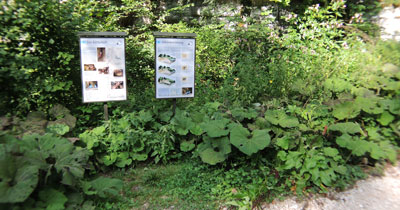
WHY THIS TRAIL?
The Spelaeological Research Society in Basel created the Karst educational trail during a period of 10 years intensive work. Why?
There is no financial gain to be had. On the contrary. It will not make us famous, yet still we did it. This is typical for all spelaeological research. But we feel the need to convey some of our efforts and our enthusiasm to the wider public.
There are no longer any blank spots on the maps of the world. Only about the oceans and what is below the ground do we still know so little.
Caves, inseparable from their Karst surroundings, present a fascinating underground landscape. Here we are able to discover new land, not 10 million light-years distant, but directly beneath our own feet. It evokes the same fascination that was felt by the early discoverers of new continents and the excitement they felt when setting foot on land where no man had gone before. The excitement rises when we begin to document our discoveries and recognise the peculiarities this new world presents.
Karst is a strange world, not well known, yet present all around us. Large areas of the landscape not only in Switzerland are Karst areas.
What is special about them is:
• They contain the largest reserves of potable water.
• They react very quickly to events happening on the surface
We live with nature. If we do it well we are well and gain from working in harmony with it.
If we make mistakes there will be adverse reactions – rather quickly in Karst areas. Problems with drinkable water are well known in Laufental as in all Karst areas.
The tube systems in caves can be of great advantage by holding back excessive water in times of flood. But this drainage system can also lead to lack of water on the surface.
When building on Karst we benefit from the dry footing it presents, but will encounter problems if it suddenly collapses. Especially when constructing below ground difficulties will arrive when we suddenly come across a cavity or meet an underground stream which may lead to the drying up of a spring.
Caves present us with other advantages.
Caves are naturally protected archives for traces of past events, be they climatic or due to evolving landscapes, which give us examples of what happens when things change. Also archaeological finds which tell us something about the evolution of living things, especially ourselves. Thus we can find answers to the big question of where do we come from and where are we going?
With all this:
Knowledge gained through research into caves and Karst is already helping us to take care of these landscapes and to live on them successfully. With this Karst educational trail we are saying:
See what a world exists beneath our feet! There is multi-disciplined research into caves.
This message is displayed on our information boards in concise form written exclusively by our specialists.
If it is received well and understood by our visitors, we have achieved what we set out to do.